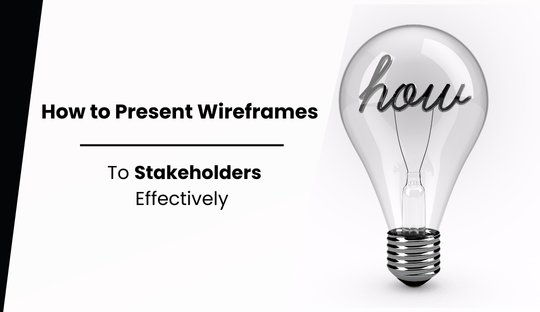
How to Present Wireframes to Stakeholders Effectively
Presenting wireframes to stakeholders is a critical step in the design process, especially for a creative brand company like Flykez CO in Estonia. Wireframes serve as the blueprint for your digital projects, providing a visual guide that represents the skeletal framework of a website or application. To ensure that stakeholders understand and approve your design direction, it’s essential to present wireframes effectively. Here’s how you can do it:
1. Understand Your Audience
Before presenting wireframes, it’s crucial to understand who your stakeholders are and what they care about. Stakeholders can include clients, project managers, developers, and marketing teams. Each group will have different priorities and levels of understanding of design concepts.
- Clients and Managers: Focus on the overall structure, functionality, and how the design meets business objectives.
- Developers: Highlight technical details and how the design will be implemented.
- Marketing Teams: Emphasize how the design supports branding and user engagement.
2. Choose the Right Tools
Using the right tools can significantly enhance your presentation. Interactive wireframes are particularly effective as they allow stakeholders to experience the flow of the website or application.
- Interactive Wireframes: Tools like InVision, Figma, or Axure allow you to create clickable wireframes that simulate the user experience.
- Static Wireframes: For simpler presentations, tools like Balsamiq or Adobe XD can be used to create detailed wireframe mockups.
3. Prepare a Clear Narrative
Structure your presentation to tell a clear and compelling story. Start with the problem statement and project goals, then walk through the wireframes to show how your design addresses these objectives.
- Introduction: Briefly explain the purpose of the wireframes and what you aim to achieve.
- Walkthrough: Guide stakeholders through each part of the wireframe, explaining key elements and their functionalities.
- Conclusion: Summarize the benefits of the design and how it aligns with project goals.
4. Highlight Key Elements
Focus on key elements that stakeholders care about. Use annotations to explain specific features and design decisions.
- User Flow: Demonstrate how users will navigate through the site or app.
- Content Placement: Show where important content will be located and why.
- Functionality: Explain interactive elements and how they enhance user experience. Also Read About Navigating the Challenges of Multi-Device Testing
5. Encourage Feedback
Engage stakeholders by encouraging them to ask questions and provide feedback. This not only helps refine the design but also makes stakeholders feel involved in the process.
- Q&A Session: Allocate time for questions and address any concerns.
- Feedback Loop: Create a feedback loop where stakeholders can share their thoughts after the presentation.
6. Use Realistic Examples
Whenever possible, use real content and data in your wireframes. This makes it easier for stakeholders to visualize the final product and understand its potential impact.
- Wireframe Examples: Provide examples of similar projects or use cases to illustrate your points.
- Real Content: Replace placeholder text with actual content to give a realistic preview.
7. Focus on Benefits
Emphasize the benefits of your design choices. Explain how the wireframe layout will improve usability, enhance user engagement, and achieve business goals.
- Usability: Discuss how the design simplifies user interactions and improves navigation.
- Engagement: Highlight features that are designed to keep users engaged.
- Business Goals: Show how the design supports the client’s business objectives, such as increasing conversions or improving brand recognition.
8. Provide Documentation
Offer detailed documentation that stakeholders can review after the presentation. This should include the wireframes, annotations, and any notes from the meeting.
- Detailed Notes: Include explanations of design decisions and feedback from stakeholders.
- Next Steps: Outline the next steps in the design process and any actions required from stakeholders.
Conclusion
Effectively presenting wireframes to stakeholders involves understanding your audience, using the right tools, and clearly communicating your design choices. By focusing on key elements, encouraging feedback, and highlighting the benefits, you can ensure that stakeholders are on board with your design direction. For more information on our services and to see how we can enhance your digital presence, visit our website at www.flykez.com.
